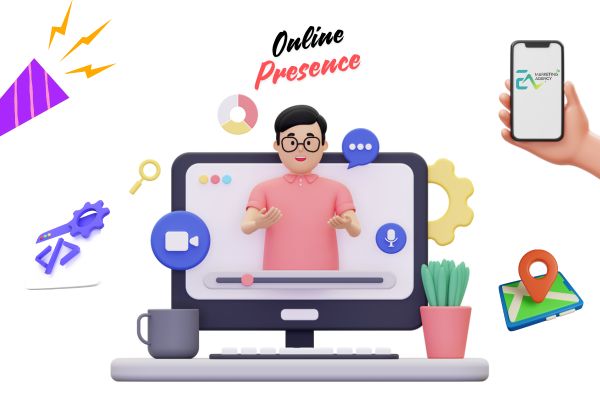
COVID-19 has had a devastating effect on economies and human lives. Disruption of global supply chains, the shutdown of factories, and job losses were just some of the outcomes of the pandemic.
Now, as businesses take stock of the situation and return to a semi-normal state, they face a new dilemma—tackling changes in consumer behavior post-COVID. The way customers connect with businesses and companies is essentially different from what it was before the pandemic. Of course, some pre-quarantine behaviors will make a comeback sometime. Many of the changes that happened during the coronavirus are likely to stay forever, though.
While the ongoing pandemic is challenging on all fronts, businesses that take the time to study consumers’ behavioral changes are more likely to succeed than those that stick to pre-pandemic marketing methods.
Here’s a look at some marketing trends we believe will drive the future.
1. Empathetic Marketing
According to the Kantar COVID-19 Barometer Wave 1 analysis, people expected brands to show their empathetic side during the pandemic and discuss how to help society. Brands that churned out generic ads failed to move the audience. In contrast, people responded better to brands that showed empathy during the pandemic. So, whether it was Uber’s “Thank you for not riding,” Dove’s “Courage is beautiful,” or Adidas’ “Thank you, healthcare workers” ads, each one of them struck a chord with the consumers. The EY Future Consumer Index survey found that around 61% of consumers are willing to choose a white label product over a brand that doesn’t stand by solid values like ethical sourcing, sustainability, and social responsibility. For marketers, this is an important lesson. Be empathetic and stand for larger social values.
2. Rise of Localization
Already a hit with active sustainability shoppers, the rise of localization is set to become a bigger trend post-COVID. Across the world, customers are looking to use locally sourced goods. A survey by research firm Kantar reveals COVID has driven a surge in localism, with 65% of people choosing to purchase goods from within their own country. The percentage further increases to 79% for those who are sustainability-conscious. As supply chains get disrupted, people have no other option than frequent local mom-and-pop stores to purchase essential items. This led to the fostering of strong relationships with local communities. By focusing on a localized marketing strategy and catering to the clientele of a particular region, marketers can strengthen their relationships with the customer base and reap more significant benefits.
3. Responsible Consumerism
Responsible consumerism is when consumers buy products that have a minimal negative impact on the environment and human life. The pandemic has made people more aware of their unsustainable shopping behaviors and their effects on the planet. A Brandwatch survey of 120,000 respondents spread over eight countries found that a large proportion of consumers believe brands should prioritize employee wellbeing and adopt sustainable practices. Consumers are trying their best to be responsible and ethical buyers, and they expect the same from brands. Brands that refuse to implement ethical practices in their production processes stand to lose customers.
4. E-Commerce
Even before the pandemic, the e-commerce sector was already experiencing massive growth. However, the pandemic seems to have accelerated it further. As lockdowns shut down entire cities, businesses moved online to meet the needs of customers. This year, online spending in the US is believed to grow between $850 billion and $930 billion. And it will reach $1 trillion next year. However, for brands, the new normal requires a strong understanding of changing consumer behavior. For instance, eMarketer reported that over 80% of customers opted for alternative brands due to low prices and out-of-stock products. No matter the reason, changing customer loyalty is something that brands have to contend with going forward. Brands can offer personalized shopping experiences including white glove customer service, tailor-made recommendations, prompt answers to queries, etc., to retain loyal customers.
5. Provide Omni-channel Services
The omnichannel marketing approach provides a seamless customer experience, irrespective of the medium used to make buying decisions. In the Euromonitor 2020 Retail Survey, 56% of respondents said COVID had forced them to sell through other digital channels. Maybe, marketers have realized it’s time to try all the formats and build audiences across different channels. In 2020, 48% of listeners paid attention to podcast advertisements more than any other medium. With podcast advertising expected to reach US$ 1 billion by 2021, podcast advertisements have become a prevalent means of gaining the attention of customers.
6. Augmented Reality
Augmented reality, which enables you to give your customers a 3D experience, saw much growth during the pandemic. It is estimated that about 75% of people worldwide will use AR by 2025. Last year, businesses actively used AR in retail, education, and remote workspaces. For example, as stores quickly shut down during the pandemic, retailers resorted to using AR to help customers virtually try on products without leaving their homes. The new normal is ever changing, and you’re going to do your brand a disservice by staying static. With hybrid work likely continuing into the future, too, it’s time to add newer technologies like AR to your marketing arsenal.
7. AI Conversational Marketing
Conversational marketing is a method where businesses interact with customers on a one-to-one level in real-time through voice assistants, chatbots, and live chat. Although in use even before the pandemic, companies resorted to AI-enabled conversational marketing to stay connected with customers during tough times. These methods played an important role in connecting businesses to their customers, predicting their needs, and forecasting sales. While there is no replacement for in-person marketing strategies, using AI and natural language processing (NLP) can help businesses understand customers like never before.
Conclusion
Companies can come out of the pandemic crisis with new and loyal consumers by listening to customers, empathizing with their pain points, and meeting them where they are. Businesses that accept the new normal and take measures to capture market share will eventually emerge as leaders in the space.




More Stories
How to Choose the Right Niche for Your Online Business
5 Ways to Boost Your Business with Online Marketing
Latest Trends in Digital Marketing for the Fashion Industry